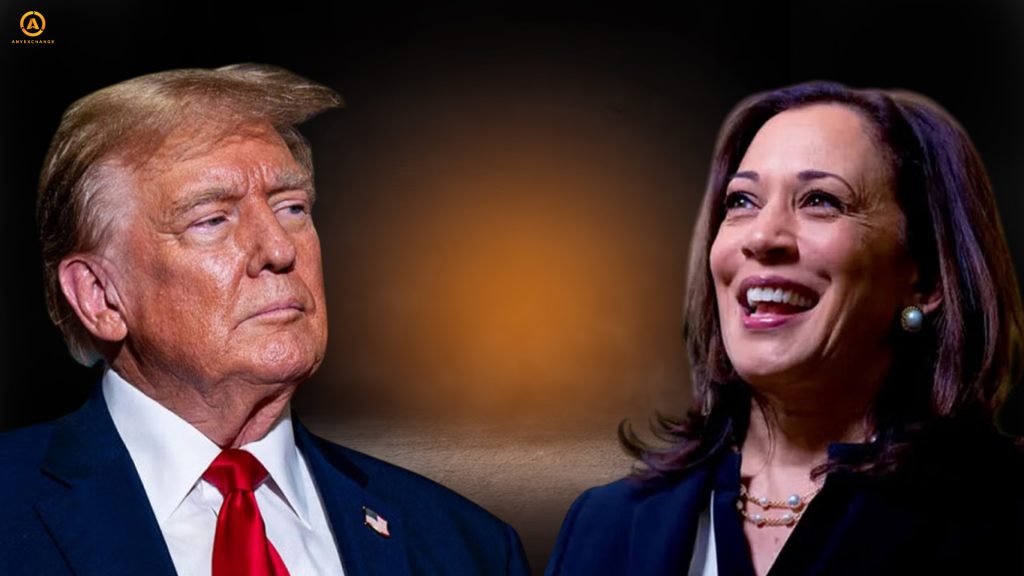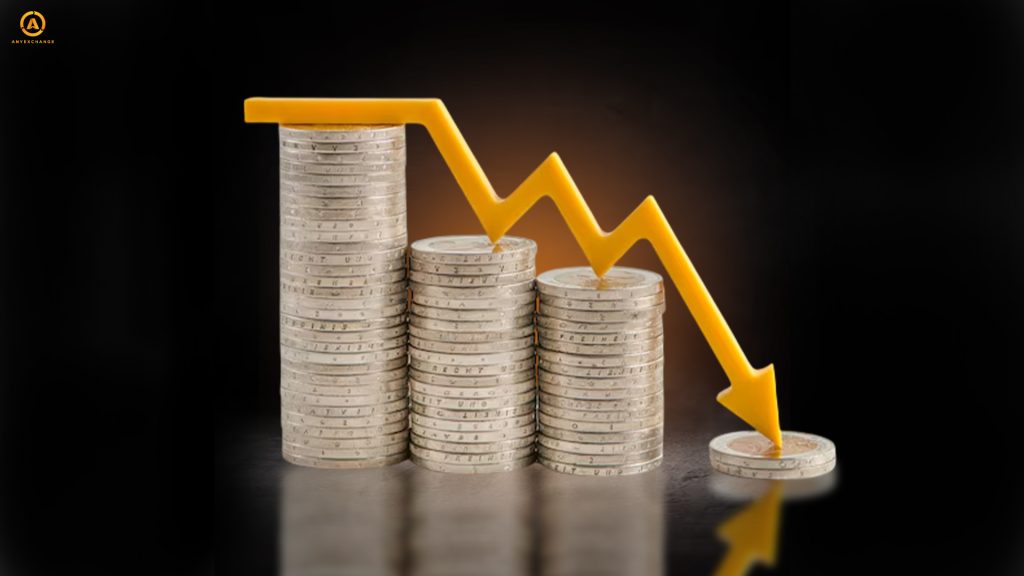
Since the beginning of 2024, bitcoin has demonstrated growth of more than 70%. Experts attribute the next record of the first cryptocurrency to a number of macroeconomic factors. Analysts highlight such factors as:
- The launch of cryptocurrency exchange-traded funds (ETFs) earlier this year;
- Inflation and interest rate cuts by the U.S. Federal Reserve this fall;
- The U.S. presidential election.
The U.S. presidential election in November was identified by most experts as the most important macroeconomic factor influencing the further development of cryptocurrencies, which could either level off or support the growth of the global market for digital assets observed since the beginning of the year.
Analysts predicted a strong continuation of growth if Donald Trump wins. With the election of Kamala Harris, the forecasts lost their unambiguity, and the expected vector of market movement — a clear direction.
The cryptocurrency market can not be considered in direct dependence on movements in the global economy. The impact of inflation on cryptocurrencies in 2024 or the connection between the global recession and cryptocurrencies are issues that are undoubtedly on the radar of analysts, but digital assets, as a specific financial instrument, follow their own path of development and are not always directly influenced by common economic factors. This year is no different.
Let’s take a closer look at the macroeconomic impact on the bitcoin price this year, how much economic instability and the cryptocurrency market are linked, how monetary policy affects cryptocurrencies, and also consider the macroeconomic factors that have had the greatest impact on the economic forecasts for cryptocurrencies in 2024.
U.S. Presidential Election 2024

Looking at the impact of geopolitics on the cryptocurrency market, we can say that historically, even such universally important events as wars have a less significant impact on the cryptocurrency market than the U.S. presidential election. Military conflicts as a macroeconomic factor affect the volatility of the cryptocurrency market or increase it in certain regions, but do not change the global trend.
On the day of the announcement of the preliminary results of the last U.S. election, November 6, 2024, gold and oil fell in price, and bitcoin updated its all-time high, breaking the $75,407 mark. The previous ATN was recorded on March 13 this year, when the value of 1 BTC was $73,777 amid massive buying in favor of ETFs.
Donald Trump in his election promises guaranteed the cryptocurrency market only the policy of maximum favorability. Experts give forecasts on the growth of the value of the first cryptocurrency, expressed in different figures. Some analysts predict that by the end of this year it will reach $100,000, others — $250,000. In any case, after Trump’s election to a second term, no one has the slightest doubt that better times are coming for the cryptocurrency market.
According to Coinbase’s CEO, the new U.S. Congress is the “most pro-cryptocurrency in history” — the House of Representatives and Senate will inсlude at least 220 pro-cryptocurrency candidates. The 47th U.S. president elect, billionaire and media personality, a man who just a few years ago called cryptocurrencies a “scam”, “hollow” and “a scam that puts pressure on the dollar exchange rate”, has changed his position in 2024, promising the American electorate in his campaign speeches the following:
- An end to the “Joe Biden and Kamala Harris crusade against cryptocurrencies” and the early formation of a presidential council on cryptocurrencies. In other words, Trump promised proper and faithful regulation. When he announced at the Bitcoin 2024 conference in Nashville that he would fire Gary Gensler as head of the SEC on the first day of his presidency, the room gave him a standing ovation. Market participants view Gensler as a corrupt retrograde with an overly harsh and biased attitude toward cryptocurrency companies. The chairman of the regulator is driven by the view that the crypto market is “rife with speculators” and has acquired a bad reputation among professional market participants. The agency under his leadership is exerting serious pressure based on a one-sided interpretation of securities laws and the lack of precise wording of the definition of digital assets. As a result, cryptocurrency companies are being fined millions of dollars and forced to change jurisdictions by registering companies outside the United States.
The very next day after the primary results were announced, Justin Sun, founder of the TRON blockchain, offered Gary Gensler a job. “After all, Gary has a family to feed,” wrote the founder of the world’s 9th most capitalized cryptocurrency, giving the crypto community food for thought. Now the community is debating whether it was trolling or a natural desire to lend a helping hand.
- Making the US the global leader in the sector. Trump has repeatedly stated that he will make the country the “cryptocurrency capital of the world.” He plans to achieve this by loosening the economic regulation of cryptocurrencies and creating the best possible environment for digital assets issued in the United States. Specifically, he wants to incentivize paying for goods and services in cryptocurrency. To illustrate, he actually made a bitcoin payment for burgers at a New York pub as part of his election campaign in September. However, Trump himself did not eat “crypto burgers” (as he jokingly called the food), but distributed them to visitors.
- Creation of a national reserve in cryptocurrency to protect against economic crises. In response to statements about plans to sell state-controlled BTC, Trump opposed and spoke about the need to maintain and increase the national reserves in cryptocurrencies, as well as the possibility of using them to solve the problem with the national debt and as a tool to protect against inflation and recession risks. At the time of writing, the U.S. authorities control about 0.1% of the total bitcoin issue.
- Provide all possible support for mining in the U.S. The future president spoke of the need to build new power plants to generate the “incredible amounts of electricity” needed to mine bitcoins, as well as avoid tax pressure on mining companies.
- Zero capital gains taxes for US-based cryptocurrencies. Trump’s premise is that this will accelerate the applicability of digital assets in everyday life. Why make it harder for an American citizen to buy a coffee with crypto by charging additional taxes if the price of bitcoin has risen since the purchase? Here, the future president promises a potential tax exemption for cryptocurrencies such as bitcoin and XRP (American), as opposed to, for example, ETH (foreign). And perhaps this is the example we will see of how macroeconomics affects the adoption of cryptocurrencies.
- Blocking initiatives to create a government-owned central bank digital currency (CBDC) by the US Federal Reserve. Trump has talked about how this tool would create additional opportunities for the Fed to control the financial lives of American citizens, which would be a violation of their constitutional rights. Incidentally, the US is the only G20 country that has not yet launched its CBDC project.
In general, in his speeches, the former and at the same time newly elected President of the United States assured the American electorate of many millions that he would not allow the crypto industry to “die slowly and painfully” as under Joe Biden, but would do everything differently.
All this rhetoric has attracted support for Donald Trump in the tech sector and in the cryptocurrency segment. The cryptocurrency tycoons Winklevoss twin brothers have become his running mates, his right hand man and the second face of the advertising campaign has become Ilon Musk, he is actively supported by Ryan Selkis and other influential figures.
It should also not be overlooked that these initiatives of Donald Trump are not at all against the interests of his family. On September 16, 2024, the day he was shot in the ear, the native token of the crypto project World Liberty Financial (WLFI) was released. Trump’s sons and Rich Teo, co-founder of Paxos, are behind the creation of the DeFi platform. And according to media reports, it plans to carry out the issuance of stablecoins. The crypto community has not yet seen the benefits of the project, as it does not represent anything out of the ordinary. At least, did not represent until after the election. Further it will be seen.
The information that Trump also made good money with meme coins during the hype around the presidential election was also actively discussed in the media. According to Arkham Intelligence, at the end of this summer, the politician owned $3.62 million worth of cryptocurrency assets, the majority of which were tokens on the Ethereum platform. Trump also reported receiving about $7 million in royalties from NFT collections, one of which is the MugShot series with a picture of him in prison, and two others are Trump Digital Trading Cards with images of him in different styles, where he appears as a cowboy, an astronaut or a ranger.
Trump is also one of the investors in MAGA (TRUMP) meme coins, whose name is an acronym for “Make America Great Again,” the politician’s main slogan. He owns about 580,000 TRUMP tokens, which have a current value of about $1 million.
The Fed and the cryptocurrency market in 2024

In September, the U.S. Federal Reserve cut its benchmark interest rate for the first time in 4 years after a two-day meeting. After keeping rates at record highs for such a long time, the long-awaited decision to cut by 50 basis points (from 5.25-5.5% to 4.75-5%) was made.
Such monetary easing brings with it a positive impetus for the impact of interest rates on cryptocurrencies through an increase in “investment appetite”. However, it usually takes at least a year to assess the positive impact of this type of monetary policy change on cryptocurrencies.
Monetary policy and cryptocurrencies
The economic situation in the world today is characterized by experts as unstable. In such times, the impact of inflation on bitcoin and ethereum can also be seen as positive, as investors look for safe havens. The role of cryptocurrencies in conditions of economic instability is that they (especially bitcoin) act as safe haven assets in times of crisis, when confidence in traditional financial assets falls.
Economic crises and cryptocurrencies

In the summer of 2024, central banks around the world cut interest rates 35 times. Such activity could signal an impending economic downturn.
Bitfinex experts say that in conditions of economic instability, when yields on government bonds and other known assets are falling, we can expect an increase in investment in cryptocurrencies. The prospects of cryptocurrencies in a global recession and at the same time minimal regulatory pressure may prove to be an effective tool for preserving investors’ funds.
Conclusion
At the end of the year, we can see that macroeconomic and geopolitical factors are having a rather positive impact on the cryptocurrency market. Analysts expect continued asset growth and investor confidence in the sector.
Thank you for your attention. Invest safely and profitably!
AnyExchange is an exchanger that allows you to convert popular cryptocurrencies at the best rates and make fast money transfers around the world.





